Restore, Rebuild is a collection which contains four projects; Humming, The Stone has Shattered, A Nosy Nose Knows, and Cored. It analyzes my experience with issues surrounding body image, in search for psychological well being and therapy.
- TitleRestore, Rebuild
- Type(s)Sculpture, Photography, Light
- AgendaMental Health
- Year(s)2019–2022
- LocationVeneto, Italy
- ReferencesMark Fisher, Capitalist Realism, Dr. Tsabary Shefali, Dr. Gabor Mate
Stone Has Shattered
“And the weight in my stomach feels like a stone—a stone l've been trying to chisel at for years now, to remove from my body so I can finally, maybe for the first time since I was a child, take a deep full breath and feel freedom. I just want it out—I can’t keep feeling this tension and the inability to be fully open. I think the anxiety of wondering when the fish will try eating me replaces the anxiety I feel when thinking of my family. I feel like they are farther and farther away. I hear the noise of their voices, but their anger slowly fades. I hope the rock in my stomach will eventually fade into powder and float out of my body through my breath. I think the sea will help. It feels like it’s loosening something within me. Even though I feel sad, I am also feeling more myself, my own self—not connected to the past but to the present. Each of us lives our own life, and we choose how much we want others to affect it. I am learning not to be affected by others and to stay within myself, a self surrounded by the sea—alone, but not with the fear or nightmares that I had for so long. There is no fear of abandonment, of being left at sea. I feel that I am in the middle of an ocean of choices. It is here that I feel connected to the world, to life, to nature, to purity, and to the unknown.”
This project reflects upon my process of letting go of my family and releasing the weight of their expectations of me. For years, I carried their voices within me everywhere, their whispers inflecting my opinions of my career, appearance, and lifestyle. Their influence came to be an almost tangible presence in my body—a stone lodged in my stomach, lungs, or throat. It has taken a long time to chip away at the bonds of blood that tie me to them.
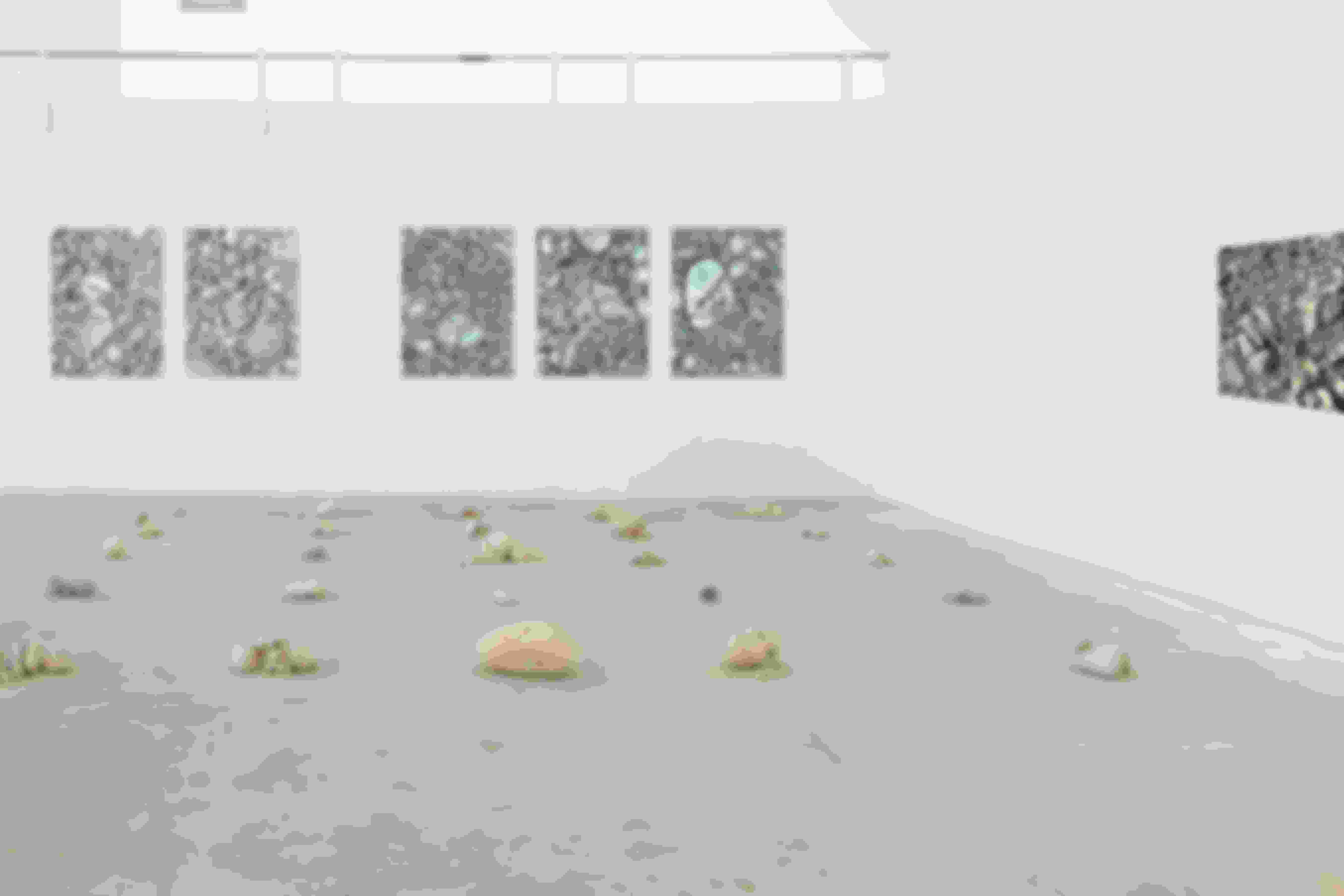

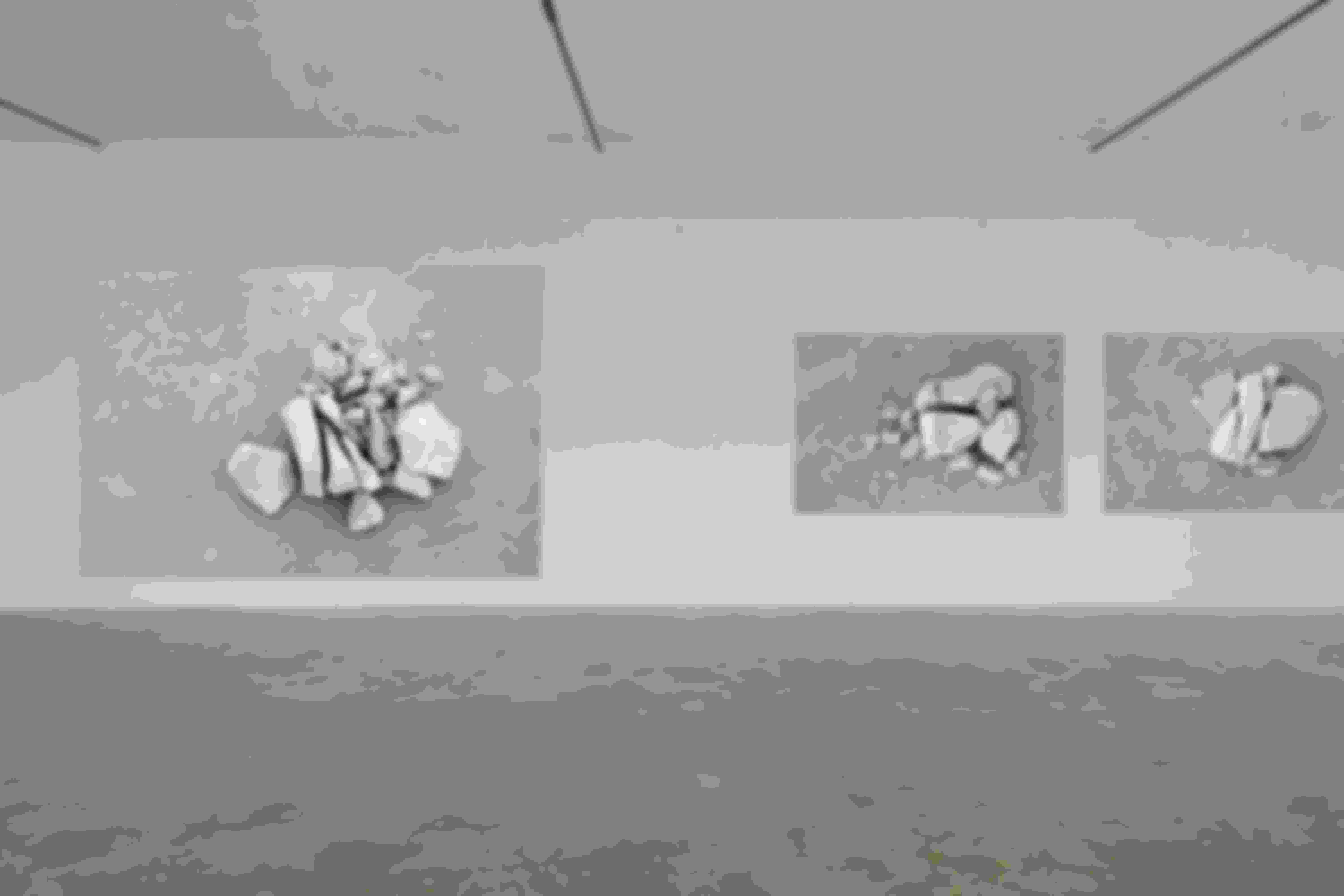
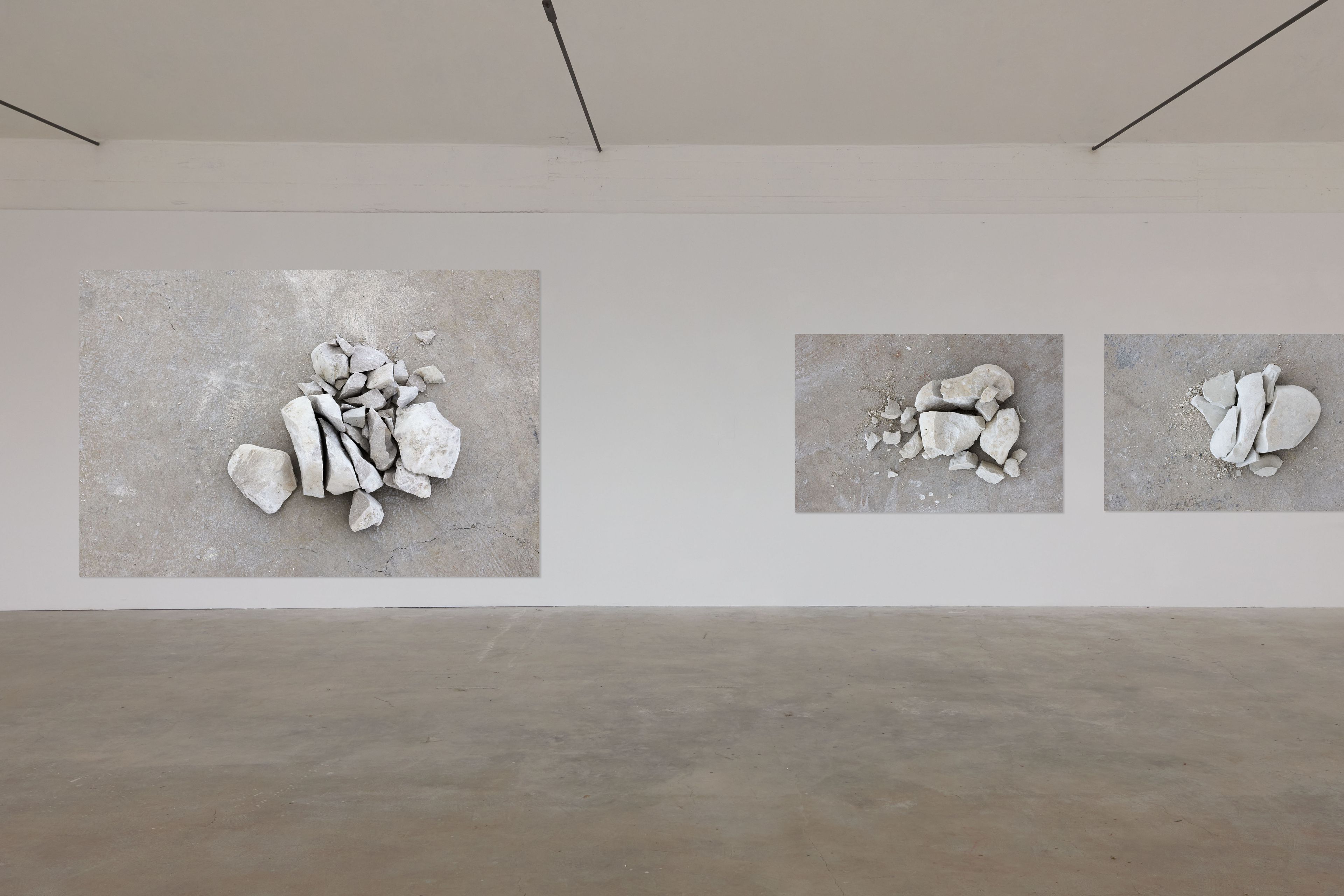
I have illustrated this progress towards liberation in a sculptural installation of shattered rocks, which symbolize the dissolution of the different pressures that snatched at my consciousness and kept me from hearing myself. The sculptures are accompanied by an audio recording based on an Eye Movement Desensitization and Reprocessing (EMDR) therapy session, in which I describe and work through a past trauma.
Resounding throughout the space, the volume on the recording gradually increases over several minutes, peaking at an oppressively loud level before falling again. In part, this manipulation of the audio illustrates how overwhelmed I was by my family’s power, while also referring formally to the iterative crest and trough of the sound of the ocean, where I first began to feel free.
Audio available upon request
Reprogramming
I have been called “Bitch” too many times in my life—often by people who owed me their respect or even their support. It took me a long time to realize that these forms of verbal abuse were not about me at all, but about the fact that I had questioned, challenged, outsmarted, or spoken back to a man. Their pride had been hurt—so they decided to hurt me. This video work documents my process of unlearning years of internalized insults, of recognizing my own power and resolving that I won’t let anyone take it away.
In an empty, white-walled room, I walk up to a blackboard with a piece of chalk in my hand. On the vacant, black surface, I write the words, “You’re a bitch.” I stand back a moment, as though considering the words I have just written. Then I erase the sentence. I write it again. Erase. I repeat this series of actions, writing then erasing the same phrase repeatedly, until there is no chalk left. I get another piece of chalk. This time, I write, “You’re wise.” I write this phrase again and again, allowing the board to fill up with the words. I write until there are only slivers of blank space in a sea of chalky marks.
I consider this piece both a video work and an event score, one which I invite others to perform publicly or privately.
Instructions
1.
Walk to the chalkboard.
2.
Take a piece of chalk. Write a phrase that someone has wrongfully said to you—or something that you would like to stop believing about yourself.
3.
Erase the phrase
4.
Repeat this process, writing the phrase and erasing it until the chalk runs out
5.
Erase the board completely
6.
Pick up another piece of chalk. Write the words that you want to believe in, words that describe the person that you are or the one that you want to be
7.
Write this phrase over and over again so that the words accumulate on the board, building gradually, filling up the vacant spaces. Write until there are no unwritten spaces, until the blackboard is entirely covered in chalk.
A Nosy Nose & Cored
A Nosy Nose Knows and Cored is about accepting individual beauty in all the forms that it takes. Through rhinoplasty and anorexia, this art project became a type of thearpy in accepting how I treated my past self and the adjustments made on my physical appearance at a young age. The psychological effects that these experiences had are explored in this body of work, to allow others who are struggling, a place to connect and converse on these important issues that many women and men struggle with.
A Nosy Nose Knows
At fifteen, I got a nose job. I remember the day I decided to have this surgery, I stood in my room, I looked into my dresser’s three-way mirror, trying to understand if I was making the right decision. I had never thought so much about that feature of my body before. I have regretted the decision that I made many times since—though I don’t blame my younger self for being led by the doubts or ideals of others. I didn’t think, then, about the ways that our facial features link us to the other members of our family or offer a glimpse of distant ancestors. At that moment, I felt only that my nose had somehow, without my knowledge, grown to ungainly proportions—that it was my most noticeable and least attractive feature.
For years, the market has instrumentalized the insecurities of men and women alike, preying on the desire to achieve some unattainable ideal. Barbara Kruger’s iconic body of red, black, and white silkscreens have critiqued the capitalist tactics that compel us to keep consuming products that promise a whiter smile, a flatter belly, a smaller nose. As stated in one of Kruger’s most renowned works, a print from 1989, “.” In a performance, I carve a nose from stone, referring to a projection of a painted nose shape—my face in profile—as if rehearsing the operation that the doctor performed on me so many years ago.
A Nosy Nose Knows is about accepting individual beauty in all the forms that it takes. Ceramic noses rest atop discarded pieces of cashmere, canvas, linen, and wood panels. In the painted image, the contours of my face are outlined by a background of “Venetian Red,” a color that has been used for thousands of years and which was originally made from an iron oxide clay quarried near Venice. Here it appears somehow bloody, like the ties of family or like the fluid that seeped from my body during that surgery in 2001.
A nosy nose knows
A nose blows and flows
A garden hose and a rose
Like a rose a nose shows how it grows
A nosing nose
A nose knows its morning brose
And cups of Joe’s, Cheerios, and afternoon gose
The Canadian snows that froze
As I doze under the throws
With a toe that shows
I arose with the lowes
…. (pause)
To a new nose day,
Today a nose knows no noes
Close to it’s beaus
The crows are it’s only foes
A nose can pose for The Row’s photos
Choose its clothes and bows
The nose throes when one owes to those who sows
But not for bros
Ladies only for the woes
This nose slows,
Another grows
I’ll never be a Ms. Monroe,
Perhaps a painting from Miro
… (pause)
Exposed am I now,
Disclosed are the bios that tie me to those
To those who have opposed,
Pretending to bestow.
Elbows on the table,
Listening to verbose,
Hopes for a transpose,
But always deposed.
Enclosed for years,
But now I am composed when in repose
A nosy nose knows
Cored
For a time, my new nose did make me feel more beautiful. I tried modeling. I still remember the way the woman at the agency looked me over and said, “Yes, I think that’s better.” They took down my measurements, a series of numbers that seemed to say, without saying anything at all, that I wasn’t proportional, beautiful, or right. I began to work at those numbers, massage them. I tried breast enhancement pills, running, and eating less. That last came to be a problem in time. My mother would give me lunch money, which I squirreled away. No lunch, just an apple. I became a connoisseur of sorts—Pink Lady, Gala, Granny Smith, Jonagold.
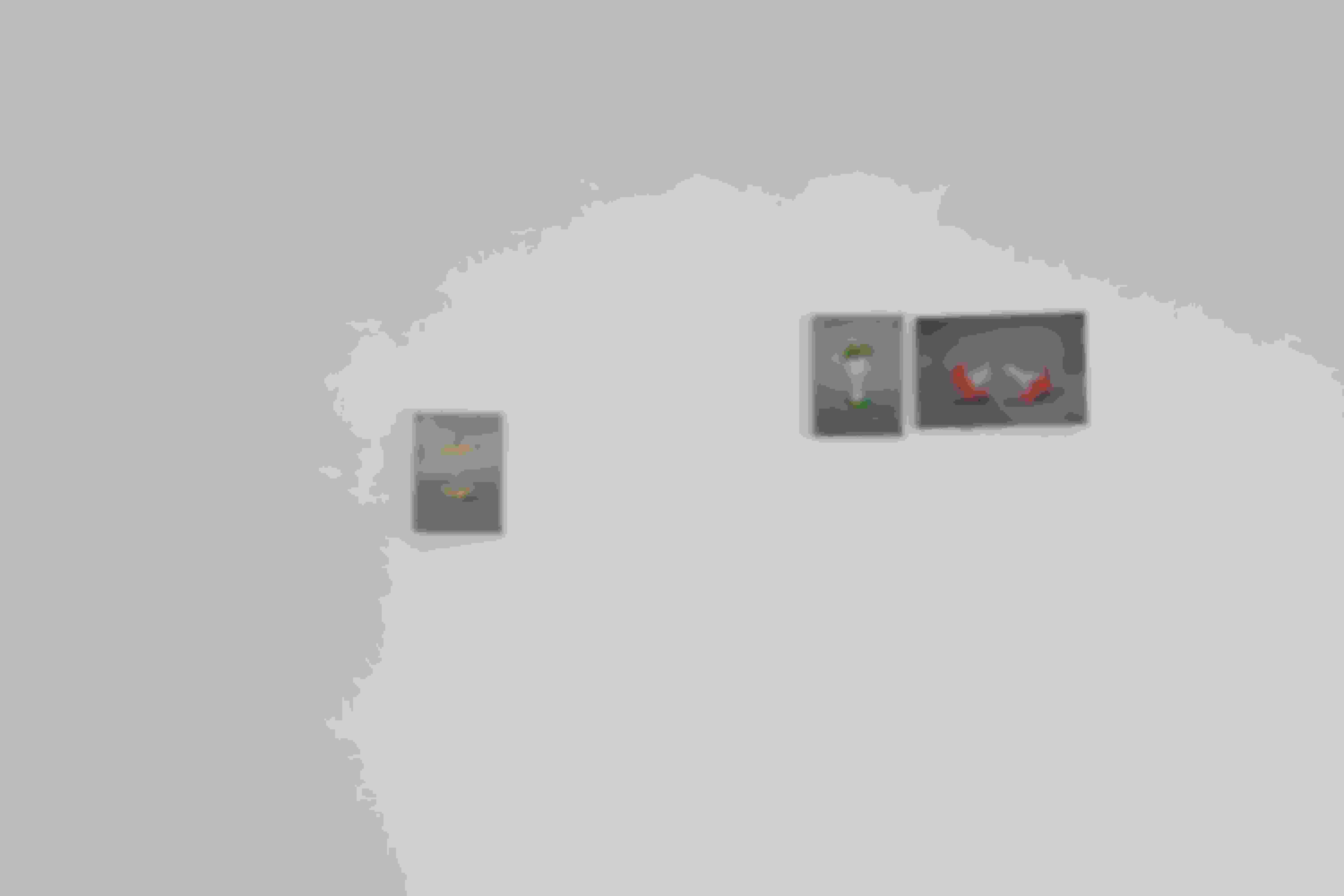

Cored draws on this struggle with anorexia. Starving my own body, I was exhausted all the time, almost without the energy to speak. When I allowed myself to eat an apple, I would turn it into a game of sorts, eating as much as I could around the core, while still making sure the fruit could still stand on its own. In retrospect, I think this act was an unwitting metaphor for my own body. I dared myself to get as thin as possible, without allowing my body to break in two.
Humming
For all the power of language, I am also interested in that which strays from its overdetermined modes of expression. Between the ages of eight and fourteen, I was , speaking only to those with whom I felt comfortable and in a low whisper to others.
During those years, I frequently hummed to keep myself company, making up wordless tunes, filling the silence that seemed to surround me with these open-mouth melodies and rhythms. Since then, I have frequently thought of this gesture and what it suggests about the fundamental sociality of speaking and hearing, even when the person you are addressing is yourself. Though I rarely spoke to others, this musical vocalization kept me from feeling alone. Sometimes I still catch myself inventing ditties when I am by myself, working songs that amplify the energy of a task.
I am interested in how a sound work made from this memory—in which I record this almost unconscious form of music—can actualize a social space for myself and for the listener, even though we are never in direct contact. I also see this work as entering a dialogue with Adrian Piper’s Humming Room, which thematizes the creative act carried out within policed and limited confines. Likewise, my work is in part a response to the gendered hierarchies that, in literal ways, stifled my voice and expression as a child.
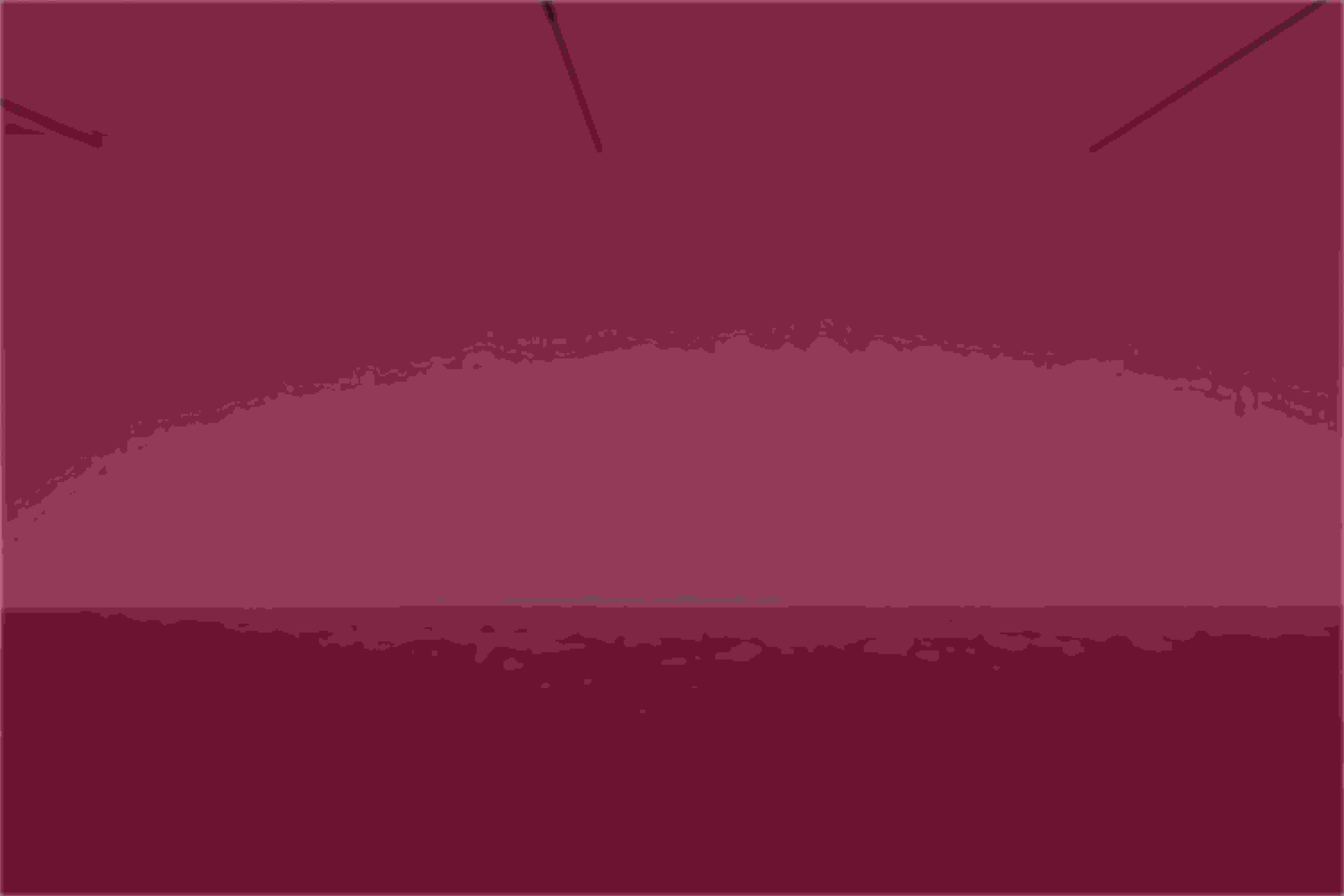
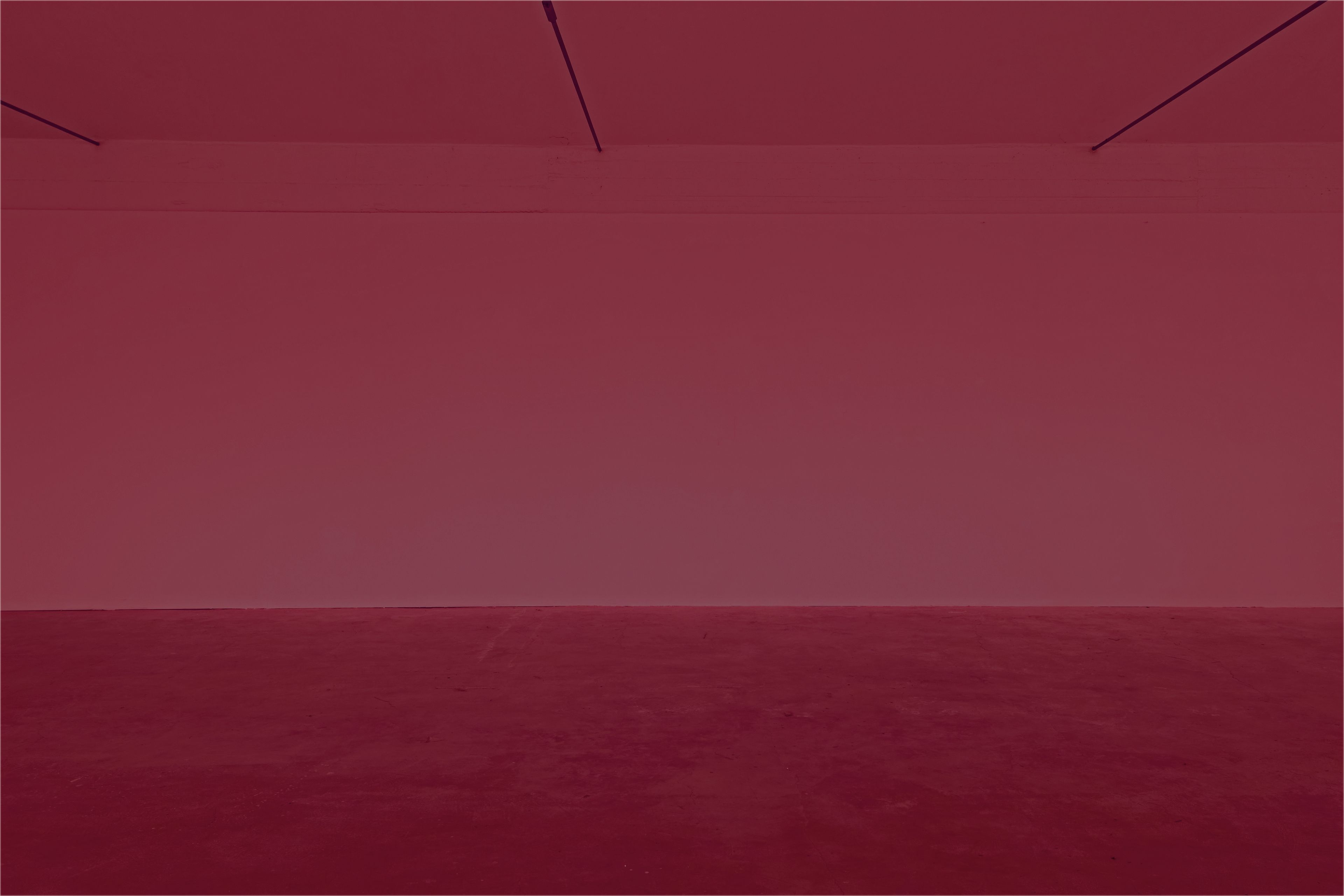
Light and sound installation

